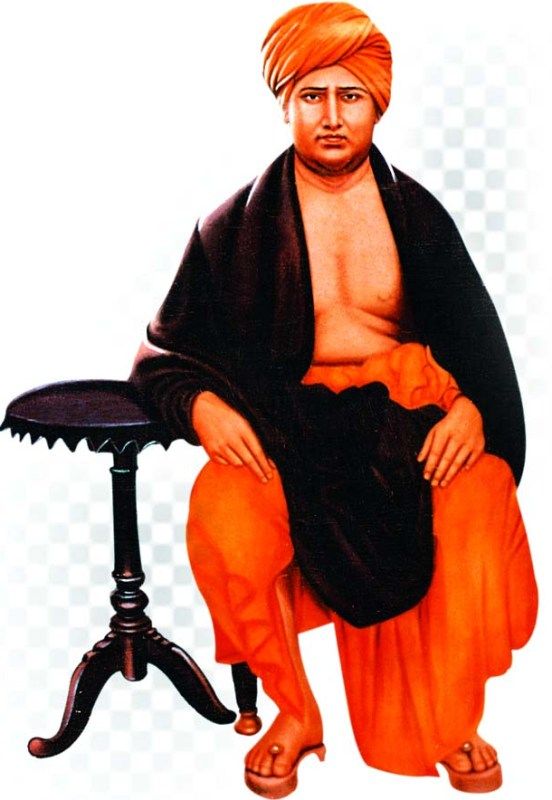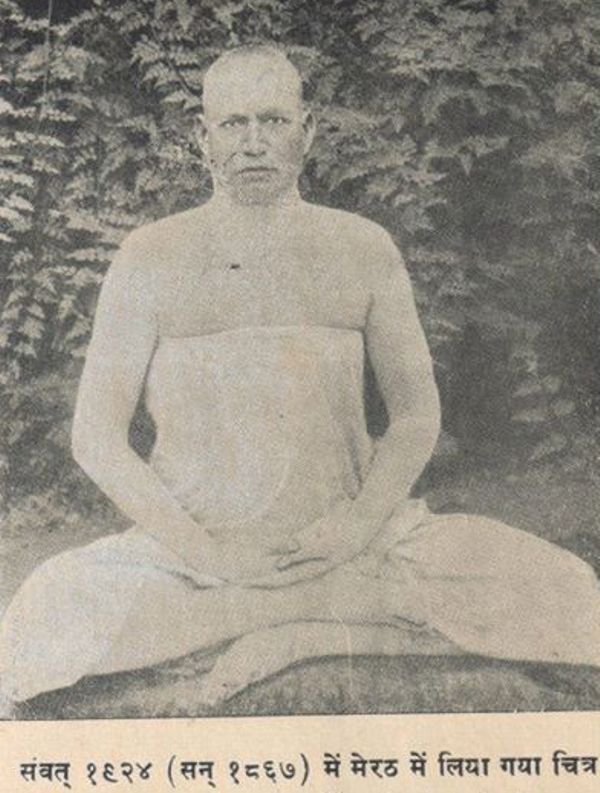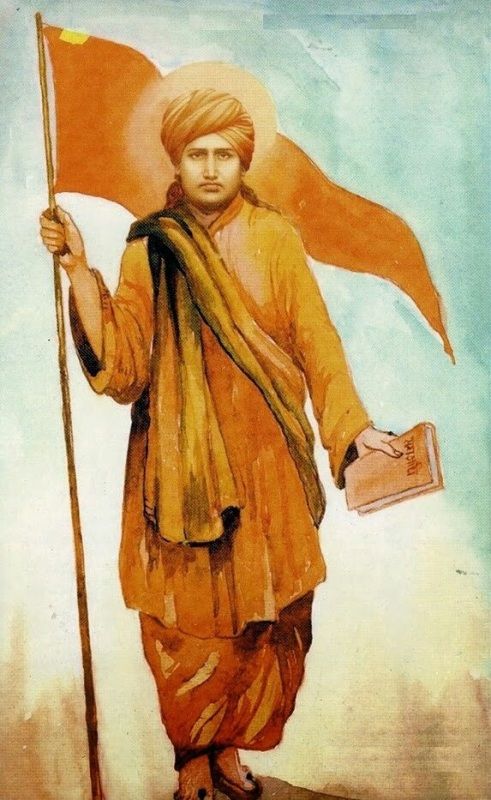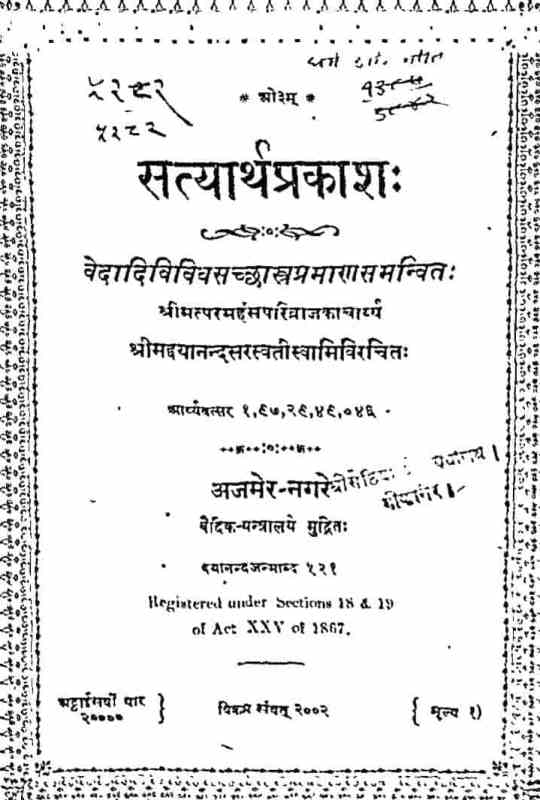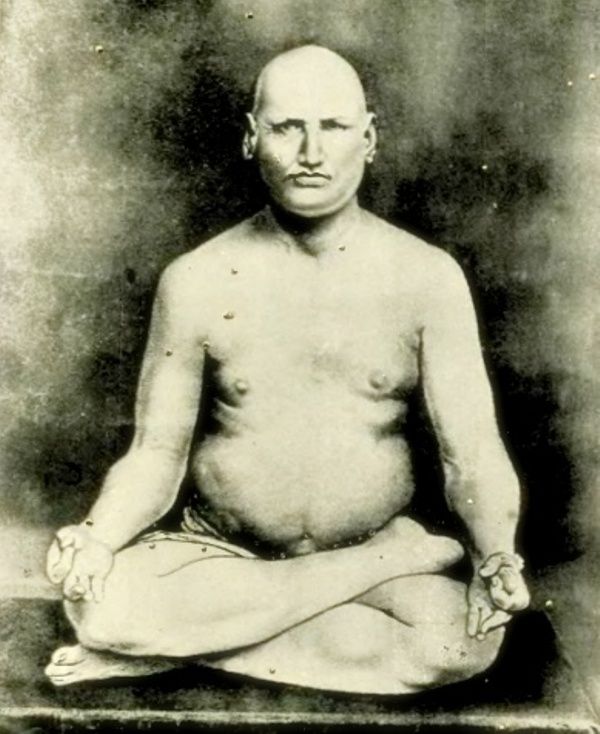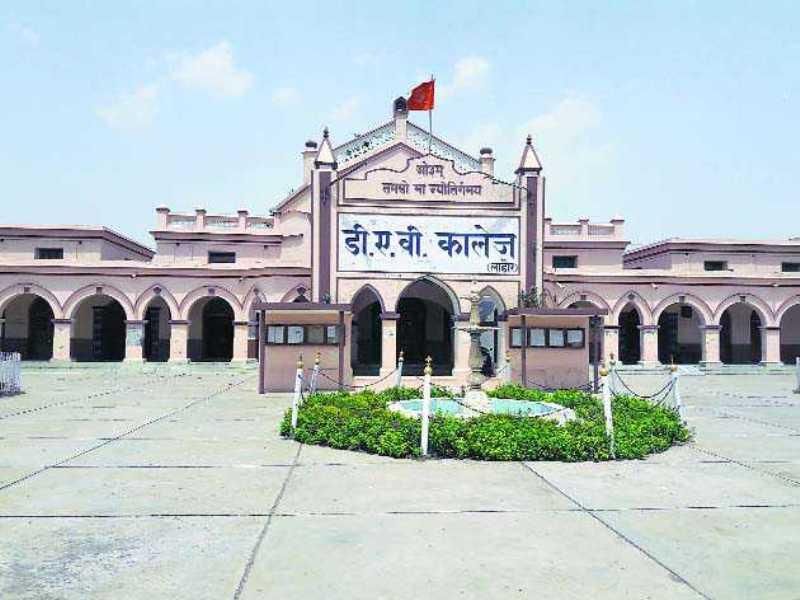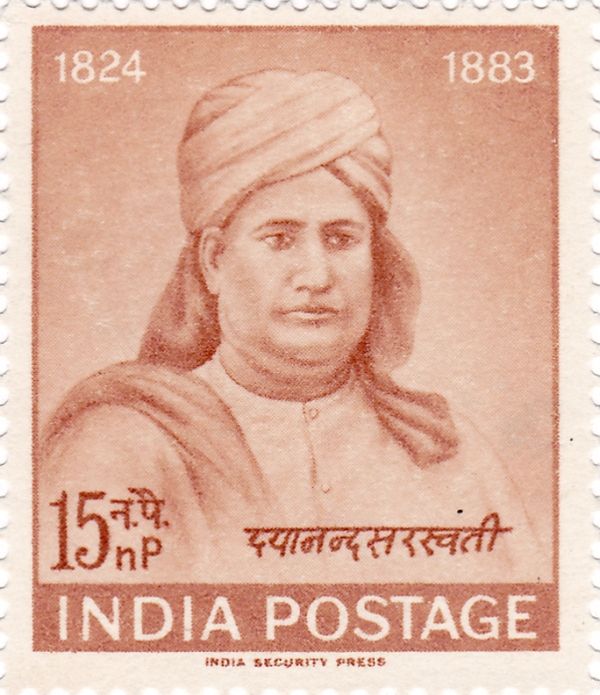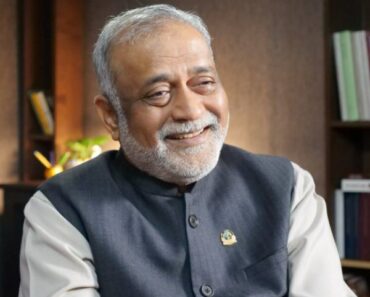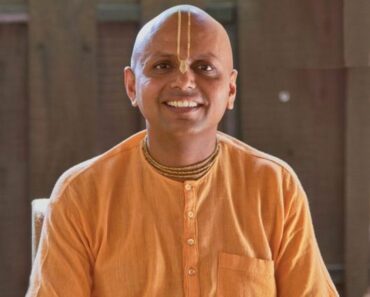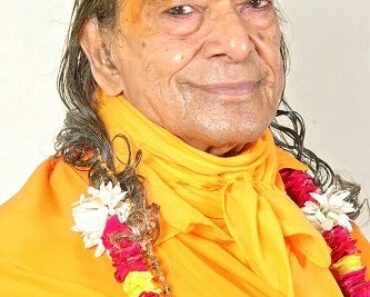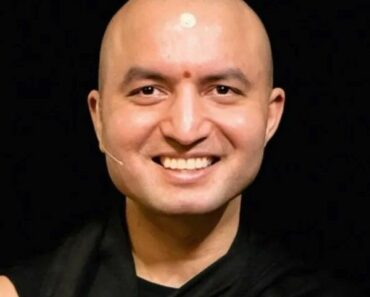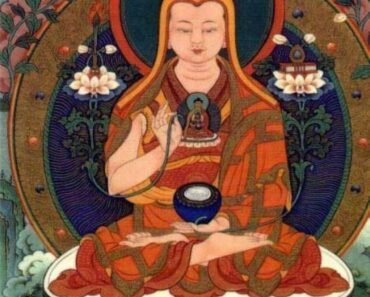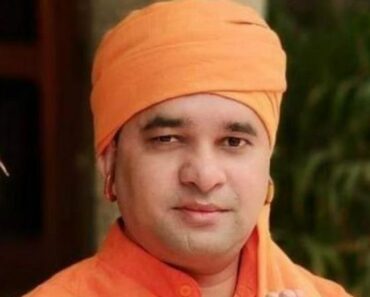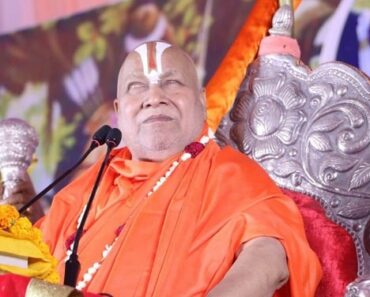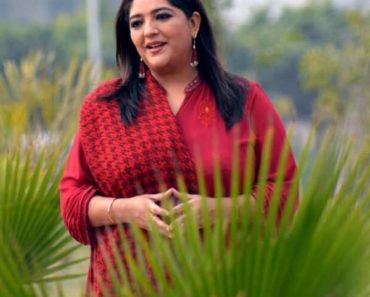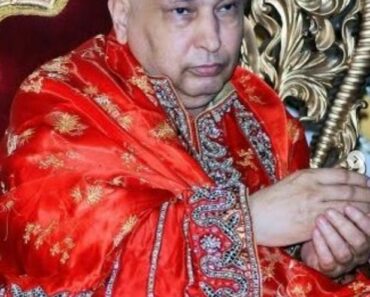Dayananda Saraswati was a 19th-century Indian philosopher and social reformer who is best known for laying the foundation of a social reform movement called “Arya Samaj.” He was, in fact, more than a religious leader who left a deep impact on the Indian society. Throughout his life, he challenged the prevailing superstition and dogma in Hinduism at the time.
I have not come to preach any new dogmas or religion, nor to establish a new order, nor to be proclaimed a new Messiah or Pontiff. I have only brought before my people the light of the Vedic Wisdom which had been hidden during the centuries of India’s thralldom.” – Dayananda Saraswati
Contents
Wiki/Biography
Dayananda Saraswati was born as Mul Shankar Tiwari on Thursday, 12 February 1824 (age 59 years; at the time of death) in Jeevapar Tankara, Company Raj (present-day Mobi District in Gujarat, India). He was a self-taught scholar and read Vedas and other Sanskrit scriptures under the tutelage of Swami Virajananda. His parents were extremely religious, and being ardent followers of Lord Shiva, they had started grooming Mul Shankar in various Brahmanical rituals since his childhood. When Mul Shankar turned eight, the ceremony of ‘Yajnopavita Sanskara’ (the investiture of the “twice-born”) was performed; formally inducting him into the world of Brahmanism. When he turned fourteen, he had already become a respected figure in his locality and could recite lengthy religious verses easily. By that time, he had also started participating in intense religious debates with veteran scholars of that time. Soon, he started noticing the pointless rituals, dogmas, and superstitions, which were heavily imbibed in Hinduism, and it aroused in him an urge to rectify these impurities in Hinduism. In his teenage, he left his home and became a wandering monk. He travelled across India in the pursuit of truth for more than two decades and during this time, he met many scholars, philosophers, and thinkers. To give a direction to his ideologies, he founded a social reform organization called “Arya Samaj” in 1875; however, within eight years of the foundation of Arya Samaj, he was assassinated in 1883.
Family & Caste
Dayananda Saraswati belonged to an affluent Brahmin family of Gujarat. [1]Contemporary Hinduism: Ritual, Culture, and Practice edited by Robin Rinehart, Robert Rinehart
Parents & Siblings
His father, Karshanji Lalji Kapadi was a very influential person who worked as a tax-collector in the Company Raj. [2]NDTV Dayananda’s mother was Yashodabai who was a homemaker. Reportedly, he had a younger sister who died of cholera. His sister was two years younger than him.
Wife & Marital Status
Reportedly, he got engaged in his early teens; however, he ran away from his home to keep himself away from marriage, and for the rest of his life, he remained a celibate. [3]Cultural India
A Mouse That Changed His Life
After being groomed by his family, that was an ardent follower of Lord Shiva, in various Brahmanical rituals, piety and purity, and the importance of fasting at an early age, Mul Shankar had himself become an ardent follower of Lord Shiva in his childhood and would often sit for hours, sometimes the whole night, in front of the idol of Lord Shiva. In 1838, when Mul Shankar was sitting in a temple of Lord Shiva on the night of Shivaratri (a Hindu festival, which is considered the wedding night of Lord Shiva and Parvati), he saw that a mouse was running over the Shiva Linga and eating the offerings to God. The incident left him pondering over the existence of God, and he questioned if God (in this case Lord Shiva) could not defend himself against a tiny mouse, then how could he be the saviour of the world. From here onwards, Mul Shankar’s thoughts towards God and religion would never be the same.
A Rebellion
The mouse incident had completely changed Mul Shankar’s perception of God and religion, especially Hinduism. He started challenging the deep-rooted orthodox in Hinduism. He also started questioning his parents about the prevailing dogmas and pointless rituals in Hinduism. He had, in fact, turned into a rebel in his own home. To divert his mind, his parents planned to get him married and engaged him in his early teens, but the rebel Mul Shankar was destined for something else, and to avoid marriage, he fled from his home in 1846.
A Wandering Monk
The desire to become a Sanyasi (an ascetic) first came to him at the age of fourteen when he witnessed the death of his younger sister who died of cholera. This desire was furthered by one of his uncle’s death, which had cemented his disbelief in pointless rituals and idolatry. After seeing their lifeless bodies, he pondered –
I shall also have to face death one day. I must devote myself to the path of salvation.”
Mul Shankar left his home in the pursuit of spiritual truth and travelled across India as a wandering monk; living in forests, mountains, and visiting the pilgrimage sites in northern India. At the age of 24, he became a formal Sanyasi; after taking Diksha (baptism) from Swami Purnananda Saraswati on the banks of Narmada. Thereafter, he started participating in debates with several philosophers, thinkers, and scholars across the country. During this period, he met Swami Virjananda in Mathura who was a blind sage and a staunch critic of the prevailing orthodox, dogma, and superstition in Hinduism. Swami Virjananda encouraged him to read the Vedas and spread its message across the world. During his last days, Swami Virjananda told Dayananda to –
Destroy the avidya (ignorance) about the Vedas and spread the true Vedic dharma in the world.”
The teachings of Swami Virjananda had such an effect on Dayananda that he decided to dedicate his entire life to spread the message of the Vedas and remove the impurities from Hinduism.
Back to the Vedas
To spread the message of the Vedas, Dayananda Saraswati travelled across India and encouraged people to follow the Vedic ideals of Brahmacharya (celibacy). He summoned the entire nation to ‘return to the Vedas.’ His “back to the Vedas” slogan had inspired many philosophers and thinkers of that time.
The Emergence of the Arya Samaj
To spread the message of the Vedas, he met many people and came across many social organizations. During his sojourn in Calcatta, he met Ramakrishna Paramahansa (Vivekananda’s mentor) and was also welcomed by Keshava and his followers of Brahmo Samaj. However, he found flaws in their philosophies and decided to establish his own organization. After his Calcatta visit, he founded the Arya Samaj on 10 April 1875 in Bombay. The motto of the Arya Samaj is “कृण्वन्तो विश्वमार्यम्” (Make the world noble!) and its founding principles are equality and justice for all individuals; irrespective of their caste, class, gender, and nationality. The ideals of the Arya Samaj are enshrined in its ten main principles, and its main message is –
All actions should be performed with the prime objective of benefiting mankind.”
The presence of Arya Samaj is not restricted to India only but in many countries across the globe, such as the United States of America, Canada, Trinidad, Mexico, United Kingdom, and the Netherlands.
An Advocate of Women’s Rights
Besides being a staunch critic of the caste system, untouchability, and the Brahmanic domination of Indian culture, Dayananda Saraswati was a strong advocate of women’s rights. He had vehemently rejected the Brahmanical doctrine that women should not read the Vedas and supported many other social rights that women were not given at that time, including the widow marriage. He believed that –
God has revealed the Vedas for all and that all men and women – i.e. the whole mankind – have a right to study the Vedas.”
Religious Career
Dayananda Saraswati dedicated his entire life spreading the message of the Vedas and fighting against the pointless rituals, dogma, and superstition in Hinduism, such as idolatry, animal sacrifice, meat-eating, offerings made in temples, priestcraft, pilgrimages, and discrimination against women; through his celebrated book “Satyarth Prakash.”
Guru (Mentor)
He learned the Vedas and other Sanskrit scriptures under the tutelage of Virajanand Dandeesha (also known as the blind sage of Mathura).
Notable Movements
- Arya Samaj
- Shuddhi Movement
- Back to the Vedas
Notable Publications
- Satyarth Prakash (1875 & 1884)
- Sanskarvidhi (1877 & 1884)
- Yajurved Bhashyam (1878 to 1889)
Influenced By
It is believed that Dayananda Saraswati’s ideologies were inspired by the teachings of many contemporary scholars, philosophers, and thinkers, such as Kanada, Yska, Patanjali, Kashyapa, Kapila, Panini, Akshapada Gautama, Aristotle, Socrates, Ramanuja, and Adi Shankara.
Influenced
Besides being influenced by many of his contemporaries, Dayananda himself was a source of inspiration to many, such as Pandit Lekh Ram, Madam Cama, Shyamji Krishna Varma, Swami Shraddhanand, Lala Hardayal, Vinayak Damodar Savarkar, Ram Prasad Bismil, Madan Lal Dhingra, Mahatma Hansraj, Mahadev Govind Ranade, and Lala Lajpat Rai.
Views on Other Religions
Christianity
Dayananda was very critical of Christianity and claimed that the Bible had many stories that encouraged sin, deceit, immorality, and cruelty. He even termed Jesus Christ a hoax and savage and questioned the logic behind the perpetual virginity of Mary; terming such doctrines being antagonists to the nature of law. [4]Dayānanda Sarasvatī, his life and ideas by J. T. F. Jordens Dayananda writes:
It appears that Mary conceived through some man, and either he or somebody else gave it out that the conception was through God. Hullo Jesus! What science told you that stars will fall. Had Jesus a little education he would have known that the stars are worlds and cannot fall down. Marriages are performed in the paradise of the Christians. It was there that God celebrated the marriage of Jesus Christ. Let us ask who were his father-in-law, mother-in-law, brother-in-law etc.?”
Islam
While condemning the teachings of the Quran, he claimed that most of these encouraged wars and immorality. He went even further and doubted that Islam had anything to do with God. He also rejected the Quran for being the “word of God,” rather he termed it a human work. [5]aryasamajjamnagar.org He says –
Quran is not made by God. It might have been written by some deceitful and fraudulent person.”
Sikhism
Although he praised Guru Nanak’s work for being noble in nature, he termed him “not much literate.” Dayananda also criticized Sikhism for projecting Guru Nanak as the one who had miraculous powers. [6]God Save India by V. S. Godbole
Jainism
He saw Jainism as “a most dreadful religion” and termed Jains as being hostile and intolerant towards non-Jains. [7]Gandhi on Pluralism and Communalism by P. L. John Panicker He writes –
All Jaina saints, family men and Tirthankaras are given to prostitution, adultery, theft and other evils. He who will associate with them will get some sort of evils in his heart also; therefore we say that the Jains are drowned in the hell of condemnation and religious bigotry.”
Buddhism
He termed Buddhism and its teachings as ridiculous and claimed that the process of “salvation” mentioned in Buddhism was so easy that even a dog or a donkey could attain it. [8]Hindu Nationalists of Modern India by Jose Kuruvachira
Views on Superstition
Dayananda Saraswati’s entire life was dedicated against fighting the superstitious practices prevailing in the society at the time. He heavily criticised the superstitious practices, such as sorcery and astrology. In Satyarth Prakash, he writes –
All alchemists, magicians, sorcerers, wizards, spiritists, etc. are cheats and all their practices should be looked upon as nothing but downright fraud. Young people should be well counseled against all these frauds, in their very childhood, so that they may not suffer through being duped by any unprincipled person.”
Controversies
- Many contemporary scholars, philosophers, and thinkers considered Swami Dayanand as radical and militant. Even Lala Lajpat Rai had once commented on Arya Samaj’s militant nature and said,
The Arya Samaj is militant, not only externally ― i.e., in its attitude towards other religions ― but it is equally militant internally.” [9]Missionary Education and Empire in Late Colonial India by Hayden J A Bellenoit
- His writings have often been considered polemic in nature. The noted historian A. L. Basham, while commenting on his writings, says –
Hinduism took offensive for the first time for centuries in Dayananda. He was also a mighty fighter in the cause of the ‘Church’ he founded and made fierce polemic speeches against its opponents.” [10]The Origins and Development of Classical Hinduism by Arthur Llewellyn Basham
- Many philosophers and historians have criticized him for his hardline views on other religions. P. S. Daniel, in his book “Hindu Response to Religious Pluralism,” writes –
More often in Dayananda’s criticism of other religions and the interpretation of their scriptures, it was not rationality that guided him, but malice and spite.” [11]Hindu Response to Religious Pluralism by P. S. Daniel
- When Mahatma Gandhi was lodged in Yerwada Prison in 1942, he read Dayananda Saraswati’s Satyartha Prakash and termed it ‘the most disappointing book.’ Gandhi wrote in Young India:
I have read Satyartha Prakash, the Arya Samaj Bible. Friends sent me three copies of it whilst I was resting in the Yarwada Jail. I have not read a more disappointing book from a reformer so great. He has claimed to stand for truth and nothing else. But he has unconsciously misrepresented Jainism, Islam, Christianity, and Hinduism itself. One having even a cursory acquaintance with these faiths could easily discover the errors into which the great reformer was betrayed.” [12]newsbred.com
- When Dayananda Saraswati introduced Shuddhi or the re-conversion ceremony, he was criticized for following the footsteps of Christian missionaries and Muslim teachers who were involved in the similar activities of proselytisation. [13]The News Minute
Assassination Attempts
It is believed that a number of unsuccessful attempts to kill Dayananda Saraswati had already been made; before his assassination in 1883. [14]The World’s Greatest Seers and Philosophers by Clifford Sawhney His followers claim that he dodged every such attempt by his spiritual powers. One such story claims that when he was tried to get drowned in a river by some attackers, he retaliated and dragged them all into the river; however, he had released them later [15]Remembering Our Leaders, Volume 4 by Bhavana Nair Another story claim that he survived under the water by doing Pranayam when a group of Muslim attackers had thrown him into the Ganges River; as they were offended by Dayananda’s comments against Islam.
Death
Reportedly, Dayananda Saraswati had become a victim of a conspiracy by a woman named Nanhi Jaan who was a court dancer of the Maharaja of Jodhpur, Jaswant Singh II. It was in 1883 when Dayananda Saraswati was on a visit to the Maharaja of Jodhpur, Jaswant Singh II, who had invited him to his place and wanted to become his disciple, that Dayananda, after seeing the Maharaja of Jodhpur dancing with Nanhi Jaan, suggested the Maharaja keep himself away from Nanhi Jaan and other such luxuries. It offended Nanhi Jaan, and she decided to take revenge. She bribed Dayananda’s cook Jagannath who mixed small pieces of glass in Dayananda’s milk. After consuming the milk, Dayananda developed a chronic illness, which culminated into his death. It is said that when Dayananda was on the death bed, Jagannath confessed his guilt, and Dayananda had forgiven him. After several days of suffering and pain, Dayananda Saraswati died on the morning of 30 October 1883 in Mount Abu. [16]Wikipedia
Facts/Trivia
- Since his childhood, he had been participating in various religious and spiritual debates. It is said that during one such debate on 22 October 1869 in Varanasi, the fourteen-year-old Mul Shankar had defeated 27 scholars and 12 expert pandits. The topic of the debate was “Do the Vedas uphold deity worship?” Reportedly, the debate was attended by over 50,000 people.
- It was Swami Purnananda who gave him the name Dayananda Saraswati. [17]The Pioneer
- The Arya Samaj is considered the first Hindu organization to introduce proselytization in Hinduism.
- The famous American spiritualist, Andrew Jackson Davis, quoted him as the “Son of God.” [18]Cultural India
- He was the first one who gave the call for “Swaraj” (India for Indians) in 1876. His call for Swaraj had inspired many Indian freedom fighters, including Lokmanya Tilak who played a crucial role in propagating this call.
- Apart from finding flaws in Hinduism, he criticized other religions too, such as Christianity, Islam, Buddhism, and Jainism.
- Dayananda has left a large legacy behind him, such as Maharshi Dayanand University (MDU) in Rohtak, DAV University in Jalandhar, and hundreds of DAV schools and colleges across India.
- In 1962, a postal stamp was released in his honour by the Government of India.
- On the occasion of Shivaratri on 24 February 1964, while writing in Dayananda’s praise, the second President of India Sarvapalli Radhakrishnan said,
Swami Dayananda ranked highest among the makers of modern India. He had worked tirelessly for the political, religious and cultural emancipation of the country. He was guided by reason, taking Hinduism back to the Vedic foundations. He had tried to reform society with a clean sweep, which was again needed today. Some of the reforms introduced in the Indian Constitution had been inspired by his teachings.”
References

